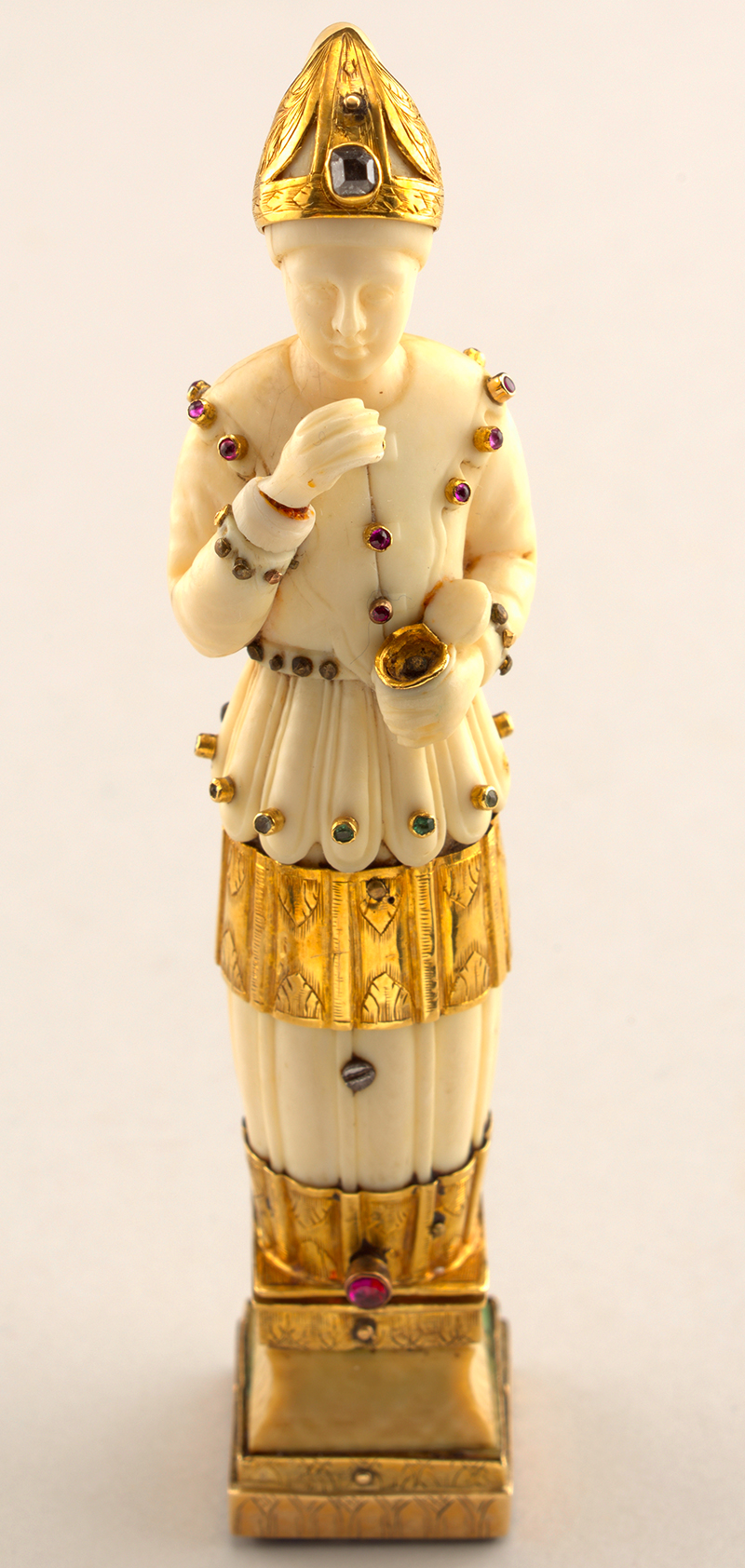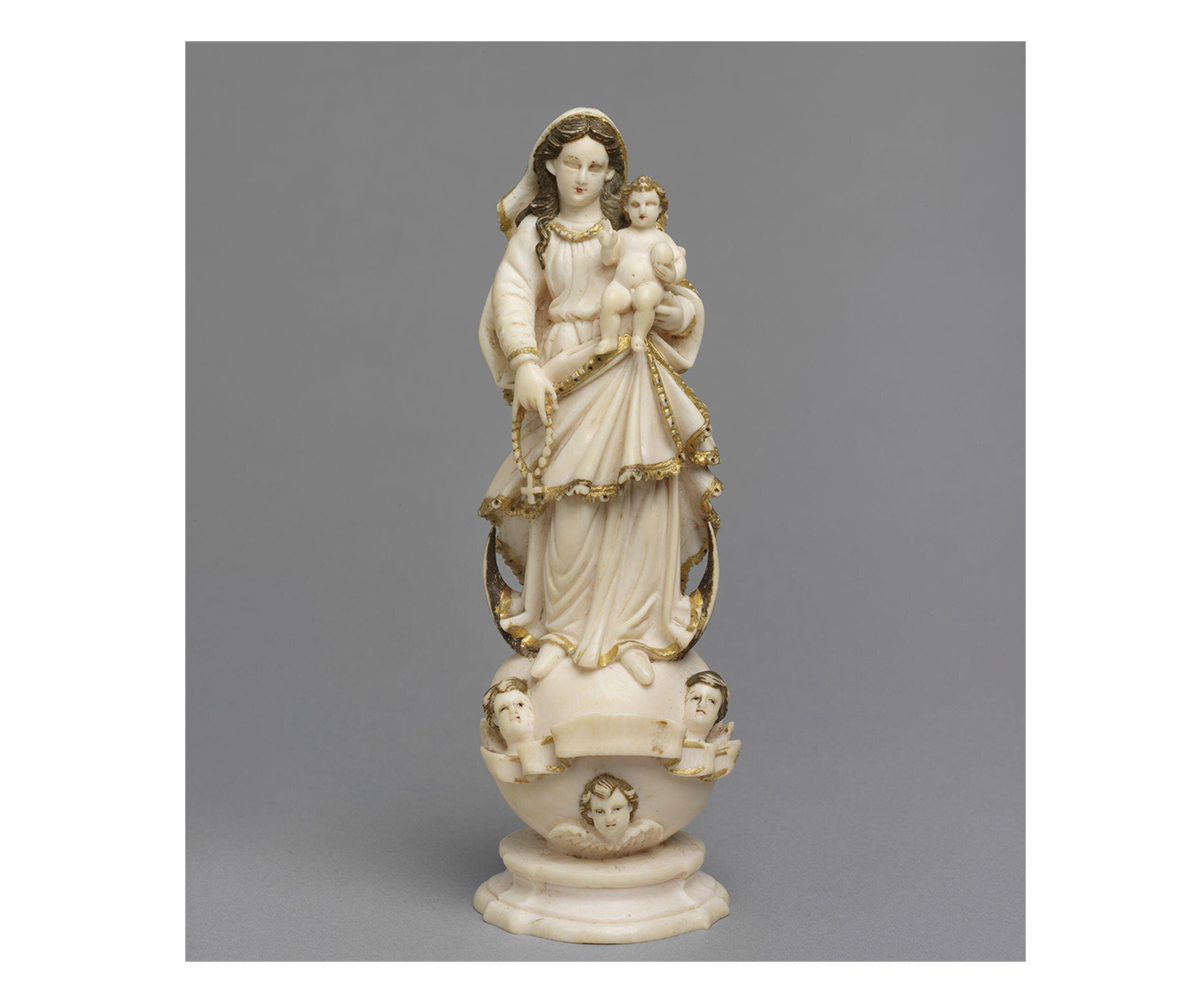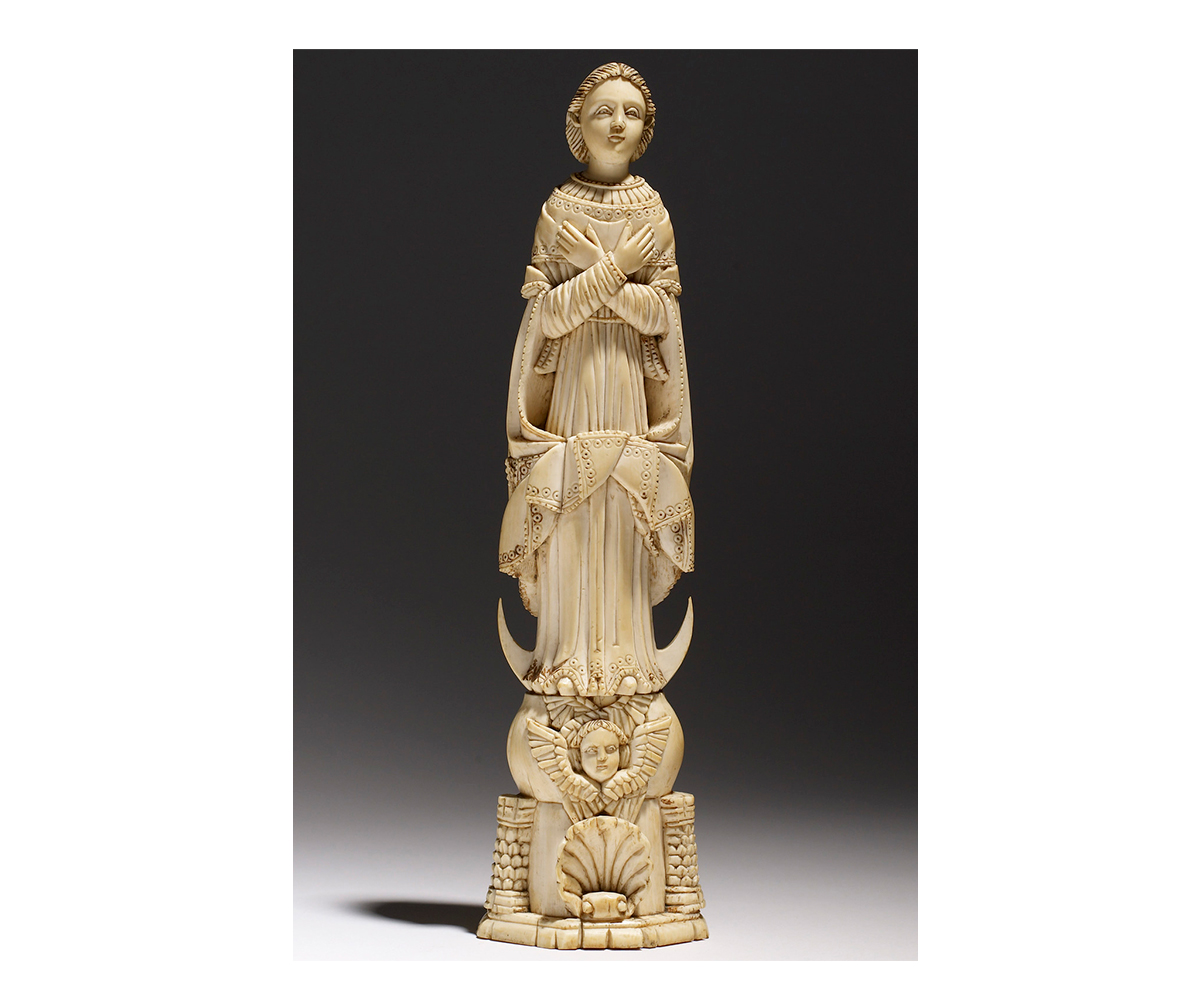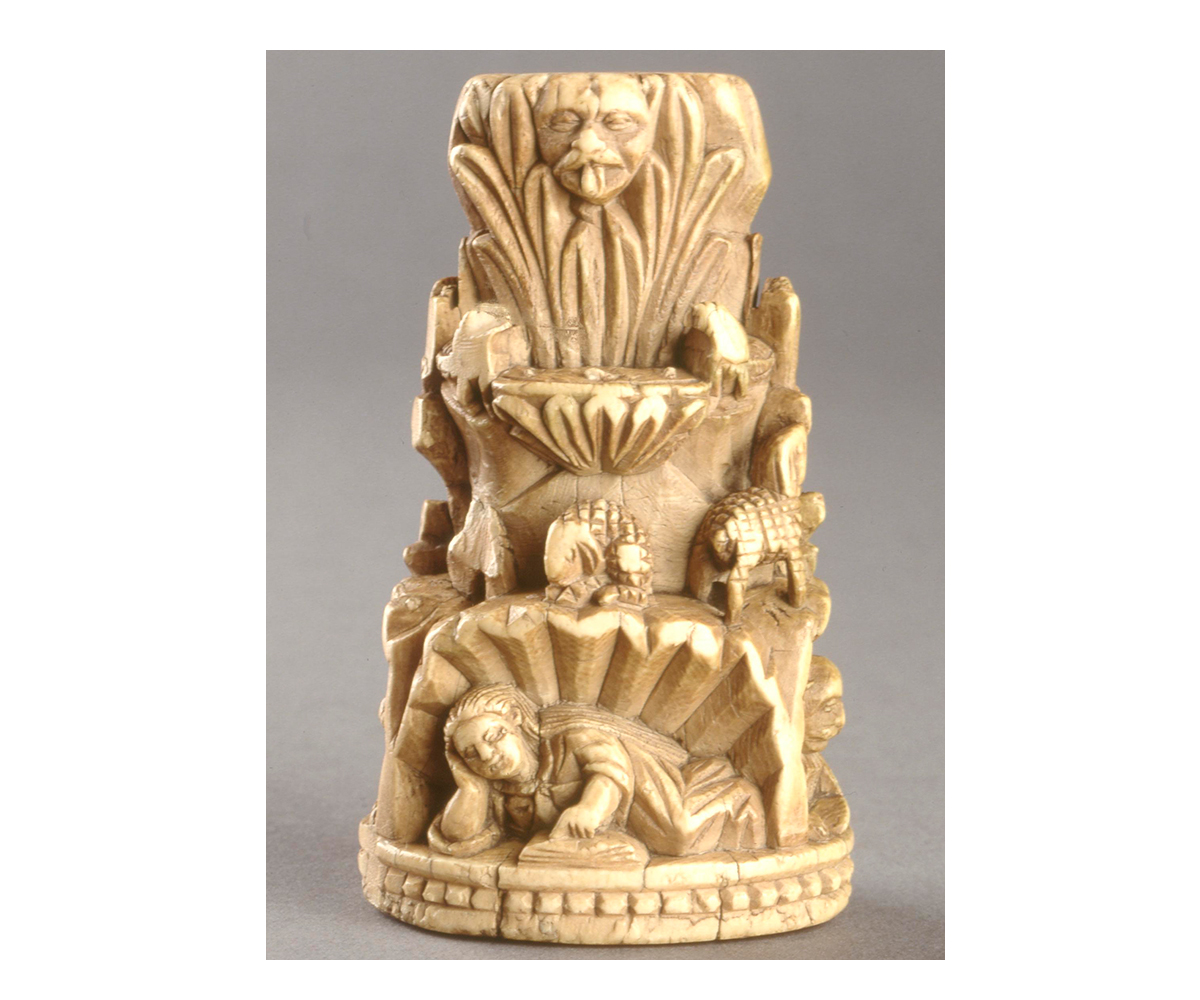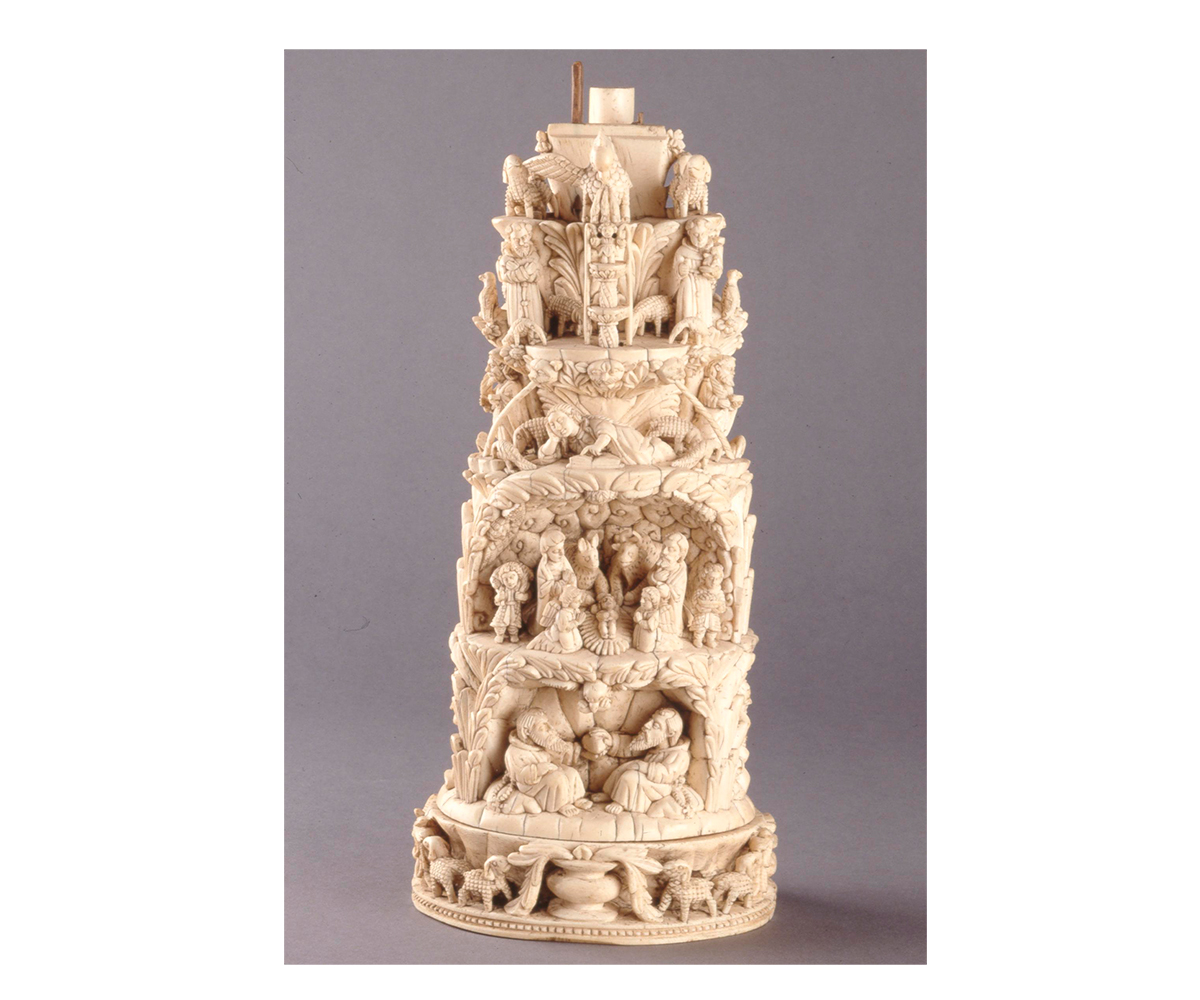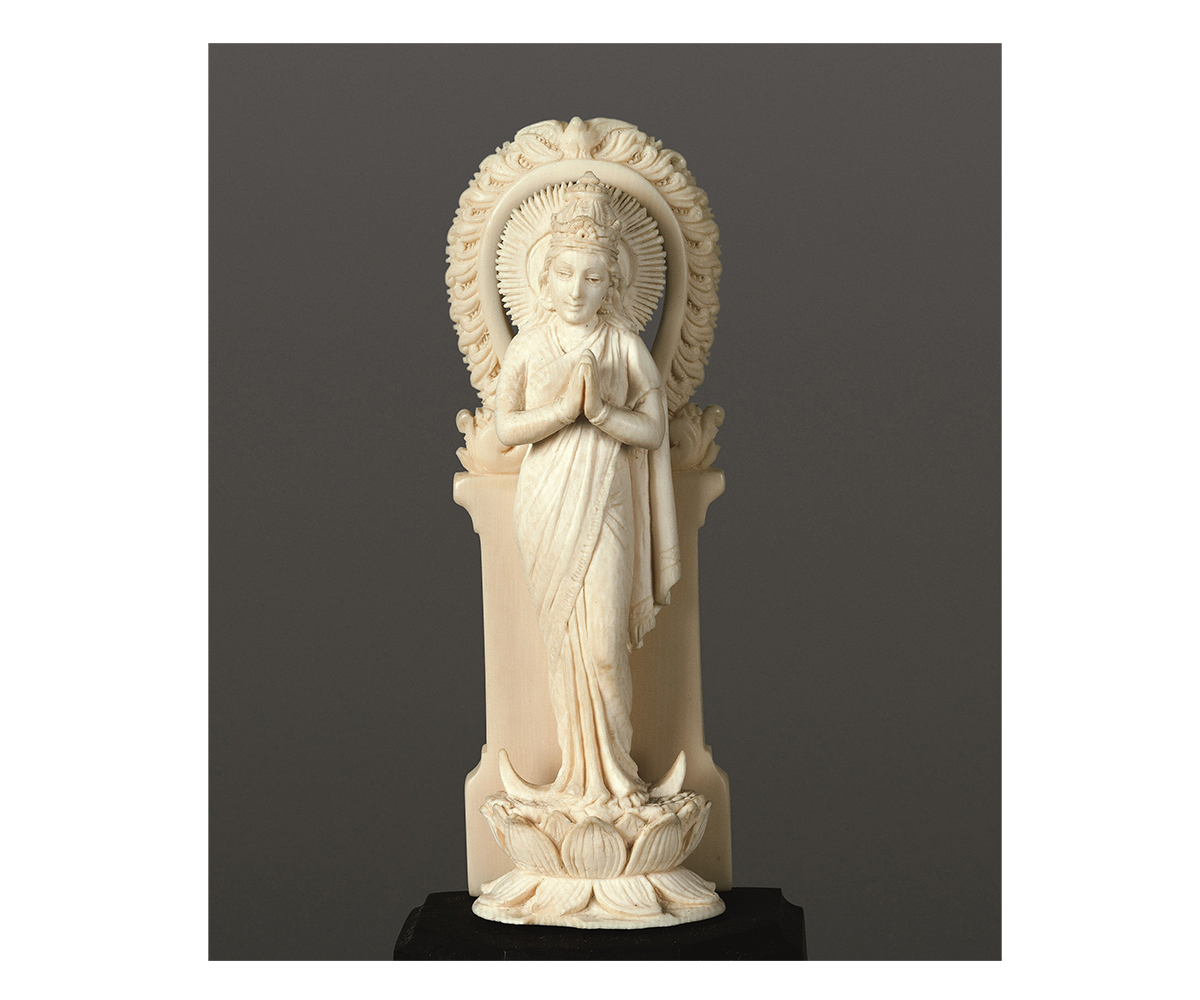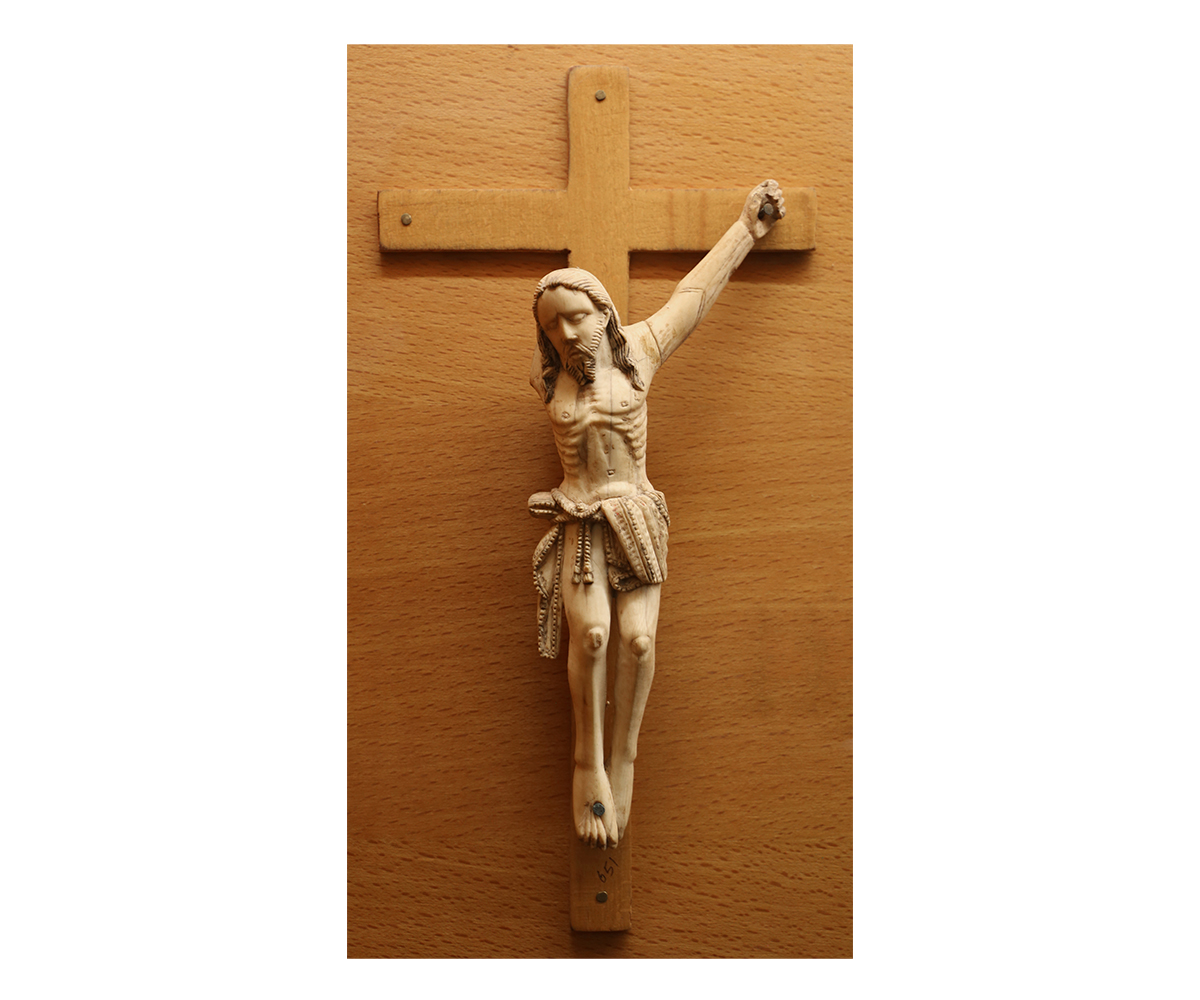ARTICLE
Goan Ivory Statuettes
With individuals or groups as their subjects, these images depicted a range of themes, such as the birth of Jesus, the Passion of Christ and other important events from the Gospel. Most popular among these were the Good Shepherd and the Crucifixion of Christ, as well as the Virgin Mary and Child. Inspired by Reformation images of the Immaculate Conception, the latter show Mary standing in the Saviour pose and clutching rosary beads in her hand. She is often depicted standing atop a crescent moon and dragon, motifs from the Book of the Apocalypse in the New Testament. The influence of Indian traditions can be seen in the treatment of the drapery, which is often rigid, as well as other details, such as the rendering of her hair in waves and curls. Other common subjects included Mary Magdalene, John the Baptist, Francis of Assisi, Ignatius of Loyola and other saints who are directly linked to the enterprise of establishing colonies and carrying out missionary work for the Catholic Church.
The iconography of the Christ Child as the Good Shepherd that emerged in these statuettes is unique, having no precedent in Christian art. The main figure of the Christ Child is depicted as sitting atop a tiered structure resembling a rocky outcrop, which is often ornamented with indigenous flora and fauna. The bottom-most section shows Mary Magdalene or another saint, such as John the Evangelist, reclining in a cave-like niche and reading the holy scriptures. The next tier usually depicts a fountain — signifying baptism and/or eucharist — often surrounded by doves and lambs. At the top of this formation is a young figure of Christ: besides being surrounded by sheep, his identity as a shepherd is indicated through his woollen coat, the water gourd tucked underneath his right elbow and a small pouch slung across his shoulder. Generally thought to be contemplating his eventual sacrifice for humanity, he is depicted seated in a meditative posture; at times he is seen carrying lambs on his shoulders or in his lap, reinforcing the metaphor of sacrifice. His eyes are closed and expression serene, as in Buddha images, while his right hand gently touches his inclined head with two fingers — a gesture that recalls the pensive bodhisattva iconography common in sixth and seventh century East Asia; his ankles are crossed in a relaxed manner, reminiscent of earlier Gandharan bodhisattva images. His childlike features and form draw heavily from the iconography of Hindu gods such as child Krishna. The vertical, tiered mountain form of this figural type recalls the towers and superstructures of Hindu temples and stands in contrast against the typically horizontal representation of such themes in European traditions. The treatment of the sheep in relation to the Christ figure can be compared to the representation of the vahanas that accompany Hindu deities, such as the bull with Durga and the tiger accompanying Shiva in Hindu artistic traditions. The Good Shepherd rockery images thus form a good example of the Goan statuettes’ unique combination of European and Catholic imagery with typically South Asian elements.
Their distinctive compositional and aesthetic typology combined with their expensive medium made these ivory statuettes exclusive and valuable, and they were often used as diplomatic gifts for rulers and elites. Today these statuettes are preserved in collections worldwide, including those of the Salar Jung Museum, Hyderabad; the Pilar Museum, Goa; the British Museum and Victoria and Albert Museum in London; and the Walters Art Museum in Baltimore, Maryland.
Bibliography
Gusella, Francesco. “Behind the Practice of Partnership: Seventeenth-Century Portuguese Devotional Ivories of West India.” In The Mercantile Effect: On Art and Exchange in the Islamicate World During the 17th and 18th Centuries, edited by Melanie Gibson and Sussan Babaie. United Kingdom: Gingko Library, 2017.
Malkarnekar, Gauri. “When Goa Sculpted a Legacy in Tusks.” Times of India, May 17, 2017. Accessed March 12, 2023. http://timesofindia.indiatimes.com/articleshow/58719339.cms?utm_source=contentofinterest&utm_medium=text&utm_campaign=cppst.
Olson, Marsha G. “Christian Art in India: Indo-Portuguese Ivory Statuettes.” Smarthistory, August 29, 2022. Accessed March 9, 2023. https://smarthistory.org/indo-portuguese-ivory-statuettes/.
“The Christ Child as Good Shepherd.” The Walters Art Museum. Accessed March 13, 2023. https://art.thewalters.org/detail/8897/the-christ-child-as-good-shepherd/.
“The Virgin and Child.” The V&A Museum, June 24, 2009. Accessed March 13, 2023. https://collections.vam.ac.uk/item/O313136/the-virgin-and-child-statuette-unknown/.




